AMD Radeon RX 9070 XT Review
For several generations, AMD has striven to match Nvidia's high-end performance. With the AMD Radeon RX 9070 XT, however, Team Red strategically targets the majority of gamers, rather than directly competing at the ultra-high end dominated by the RTX 5090. The result? A truly exceptional graphics card.
Priced at $599, the AMD Radeon RX 9070 XT rivals the $749 GeForce RTX 5070 Ti, immediately establishing itself as a top contender. This competitive pricing is further enhanced by the inclusion of FSR 4, AMD's first foray into AI upscaling. This makes it the ideal choice for 4K gaming, especially for those unwilling to spend the $1,999 price tag of the RTX 5090.
Purchasing Guide
The AMD Radeon RX 9070 XT launched March 6th, with a starting price of $599. Remember that prices may vary due to third-party customizations; aim for a price under $699.
AMD Radeon RX 9070 XT – Photos
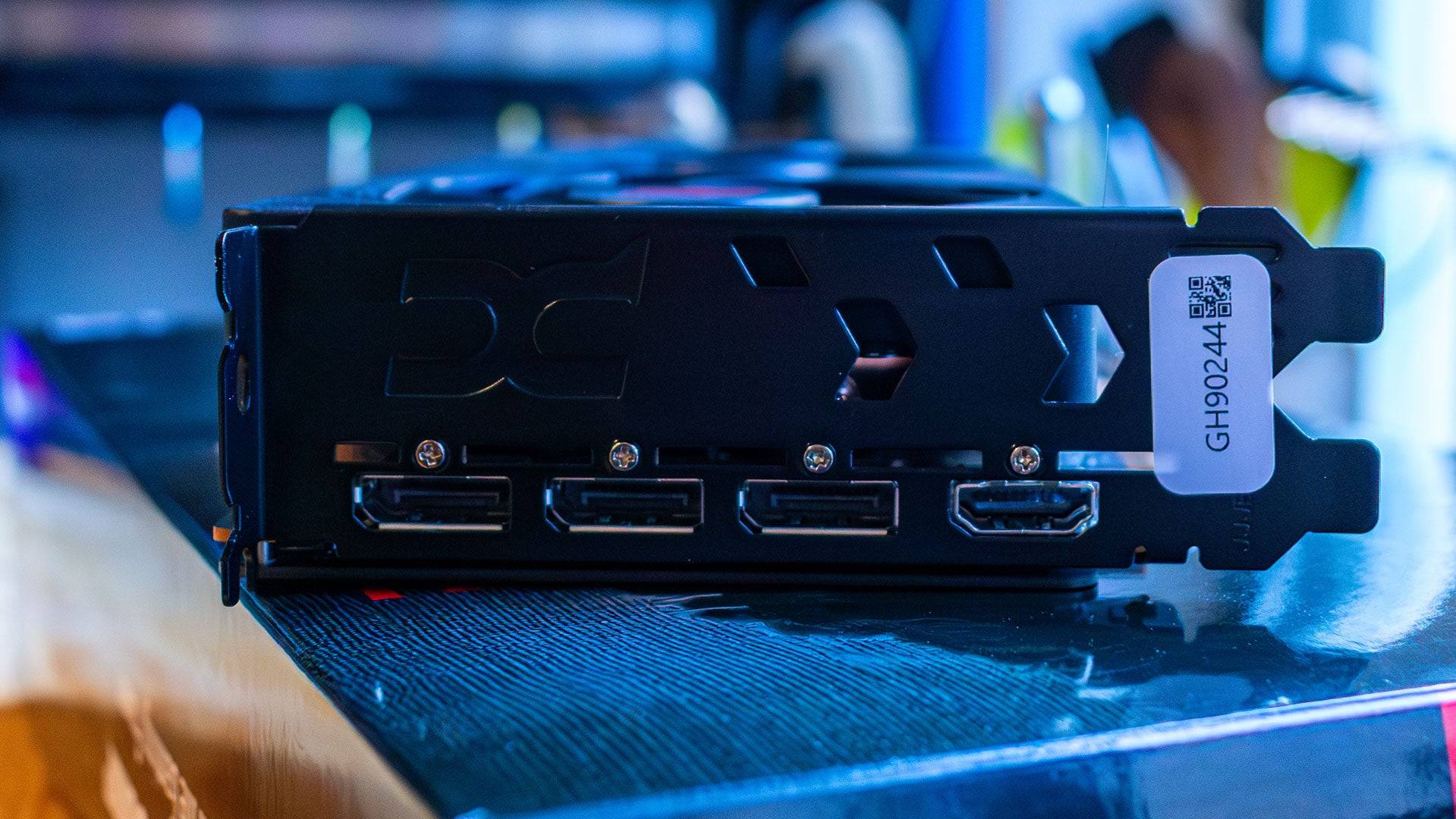

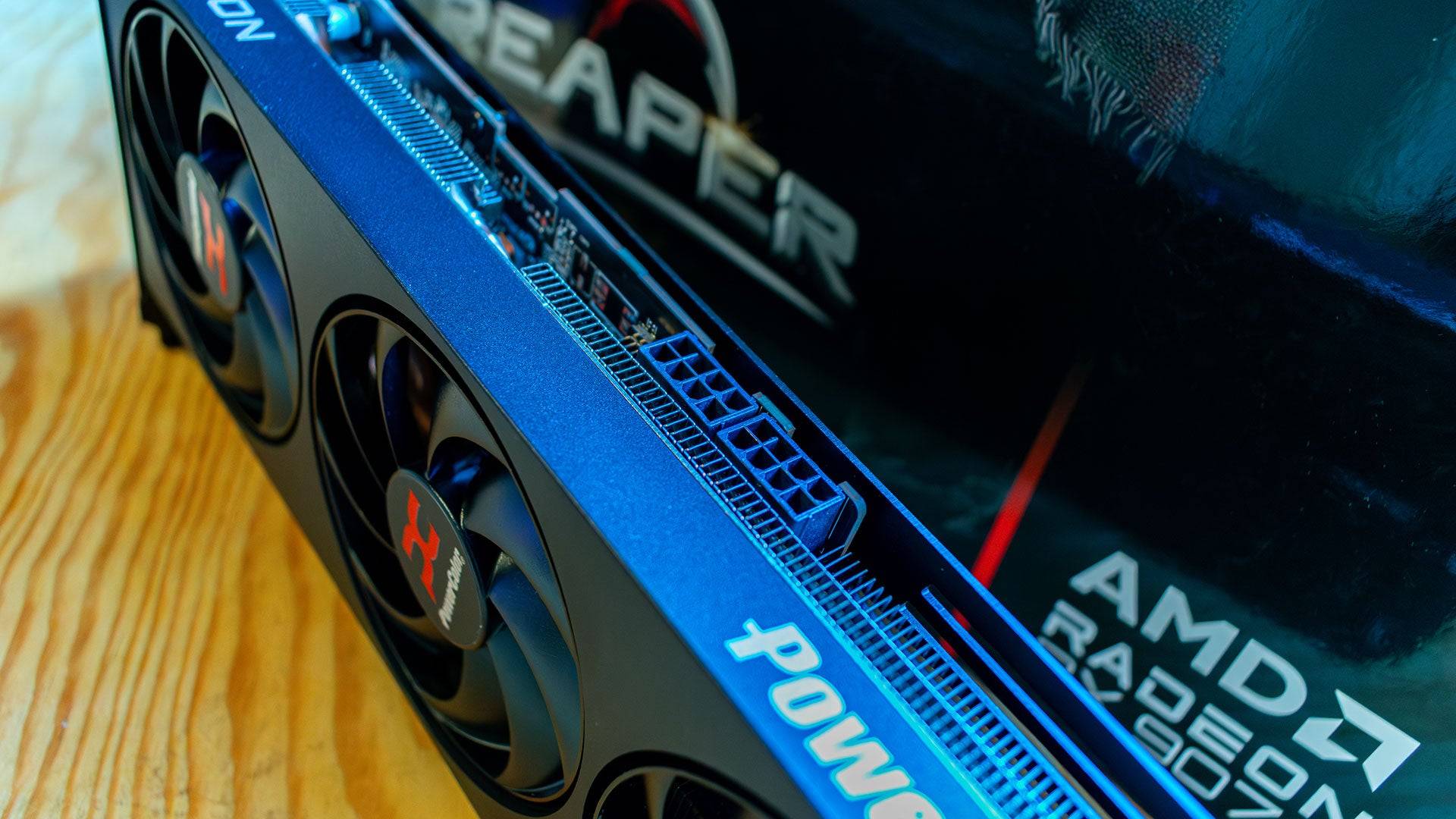
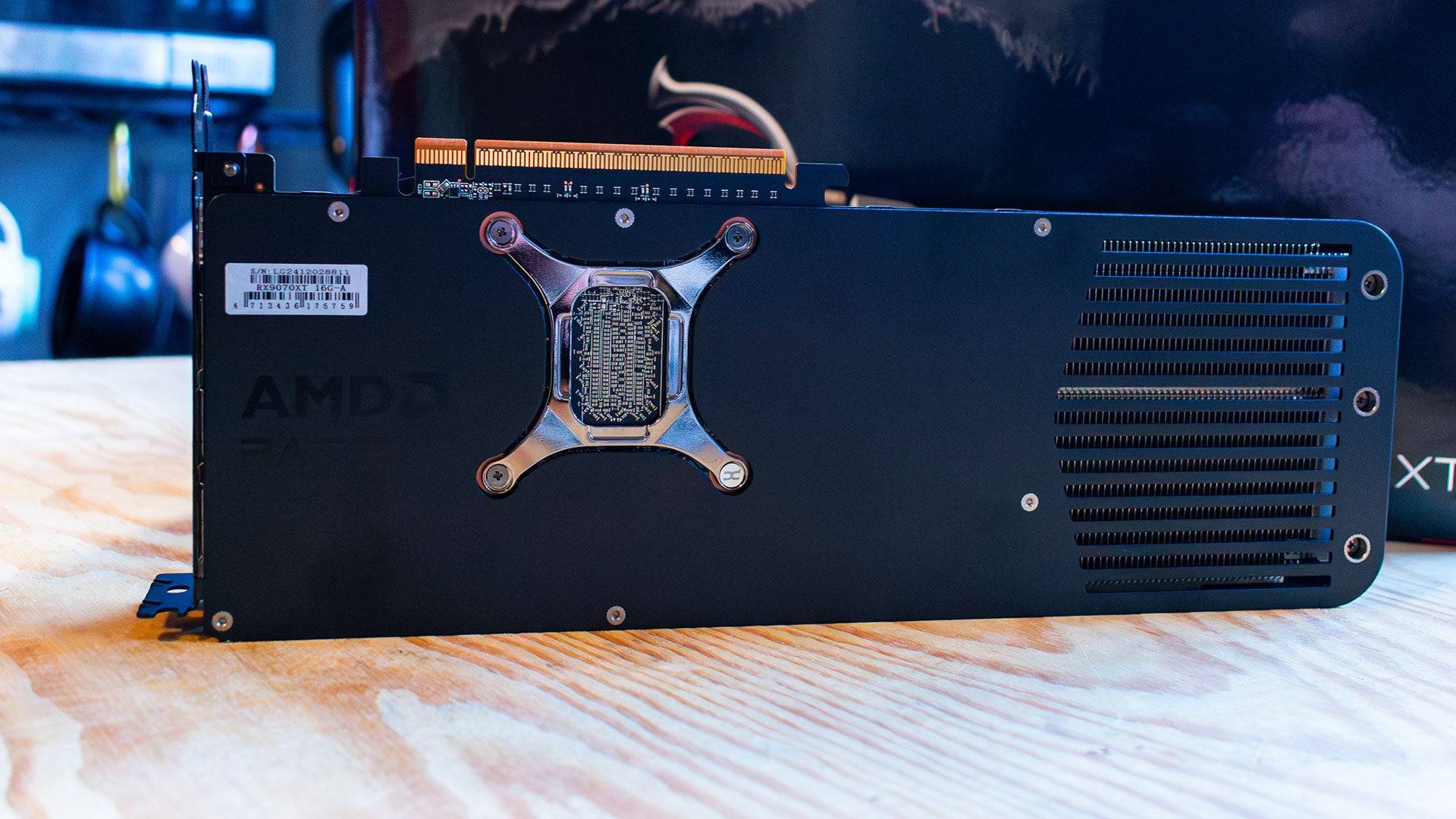
Specs and Features
Built on the RDNA 4 architecture, the AMD Radeon RX 9070 XT boasts significant improvements. While shader core enhancements are notable, the real highlights are the new RT and AI Accelerators. These accelerators power FidelityFX Super Resolution 4 (FSR 4), bringing AI upscaling to AMD GPUs for the first time. FSR 4 doesn't always surpass FSR 3.1 in frame rates, but it significantly improves image accuracy and quality. Conveniently, Adrenalin software allows users to disable FSR 4 if frame rate prioritization is preferred.
Beyond AI upscaling, AMD has boosted shader core performance. Despite having 64 Compute Units (compared to the 7900 XT's 84), the 9070 XT delivers a substantial generational leap at a lower price point. Each Compute Unit features 64 Streaming Multiprocessors (SMs), totaling 4,096, along with 64 ray accelerators and 128 AI accelerators.
However, the RX 9070 XT has less memory than its predecessor (16GB GDDR6 on a 256-bit bus, versus 20GB GDDR6 on a 320-bit bus). This reduces capacity and bandwidth, though it remains sufficient for most 4K gaming. The continued use of GDDR6, rather than an upgrade, is a minor drawback.
While more efficient, the RX 9070 XT has a slightly higher power budget (304W) than the 7900 XT (300W). Testing showed the 7900 XT actually consumed more power (314W) than the 9070 XT (306W). This power requirement is standard for modern GPUs, making cooling relatively straightforward. Unlike previous generations, AMD isn't releasing a reference design; users must rely on third-party manufacturers. My review unit, the Powercolor Radeon RX 9070 XT Reaper, maintained a temperature of 72°C during testing despite its compact triple-fan design.
The Radeon RX 9070 XT utilizes standard power connectors (two 8-pin PCI-E), simplifying upgrades for most users with a 700W power supply (as recommended by AMD). Connectivity includes three DisplayPort 2.1a and one HDMI 2.1b ports—standard for modern cards. The absence of a USB-C port is a missed opportunity for increased flexibility.

FSR 4
AMD has long needed an AI upscaling solution to rival DLSS. While previous FSR versions offered performance gains, they suffered from ghosting and fuzziness. The Radeon RX 9070 XT addresses this with FSR 4. Similar to DLSS, FSR 4 leverages AI accelerators to analyze frames and game engine data for accurate upscaling. Image quality surpasses FSR 3 (which used temporal upscaling), but at a performance cost.
In *Call of Duty: Black Ops 6* (4K Extreme, FSR 3.1 Performance), the 9070 XT achieved 134 fps; FSR 4 reduced this to 121 fps (a 10% drop) with improved image quality. *Monster Hunter Rise* showed a similar trend (94 fps with FSR 3/ray tracing to 78 fps with FSR 4—a 20% drop). This performance reduction is expected due to the increased computational demands of AI upscaling. The improved image quality may outweigh the performance loss for single-player gamers. FSR 4 is opt-in, easily disabled via Adrenalin software (it was disabled by default on my review unit).
AMD Radeon RX 9070 XT & 9070 – Benchmarks
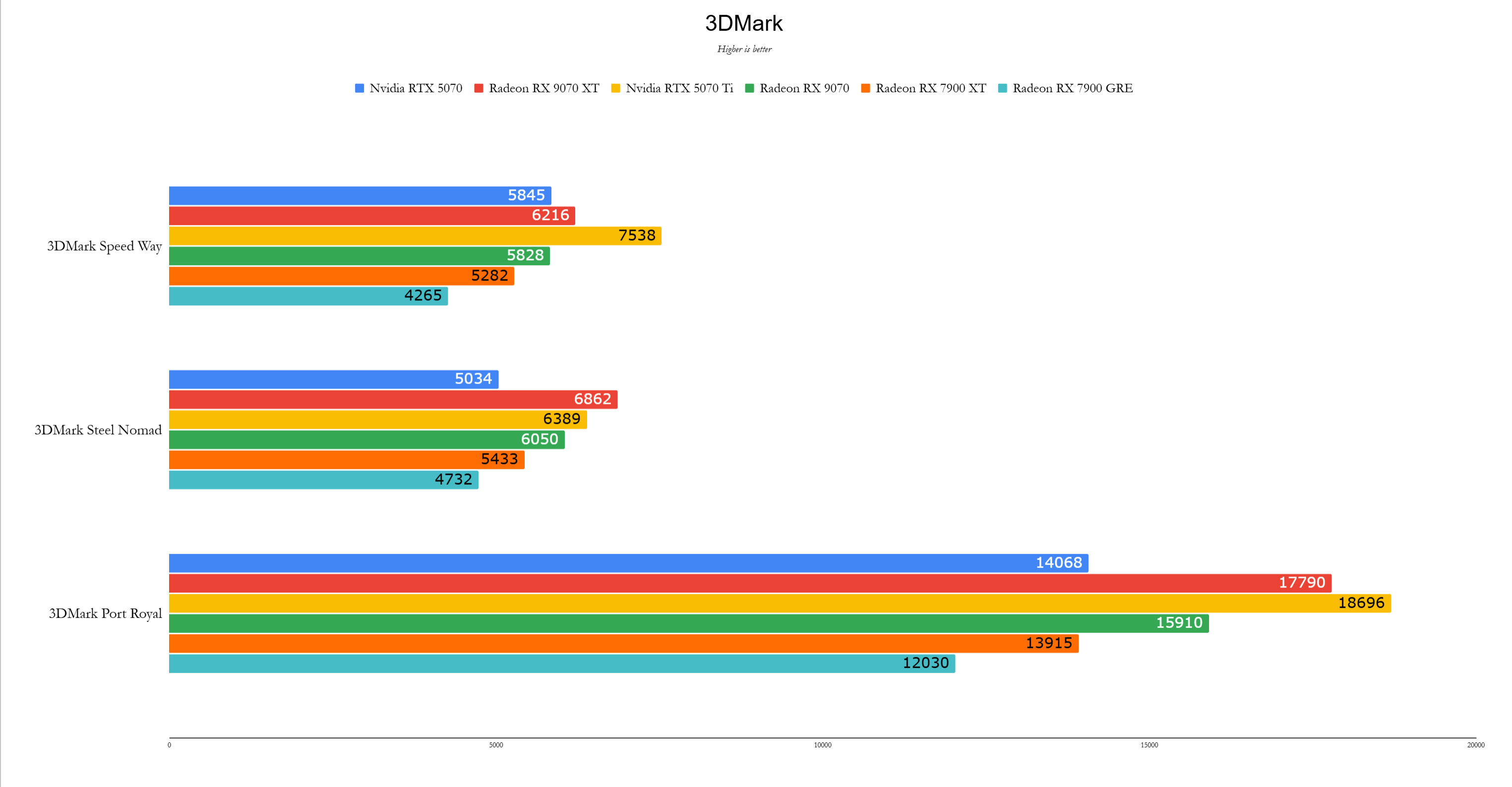
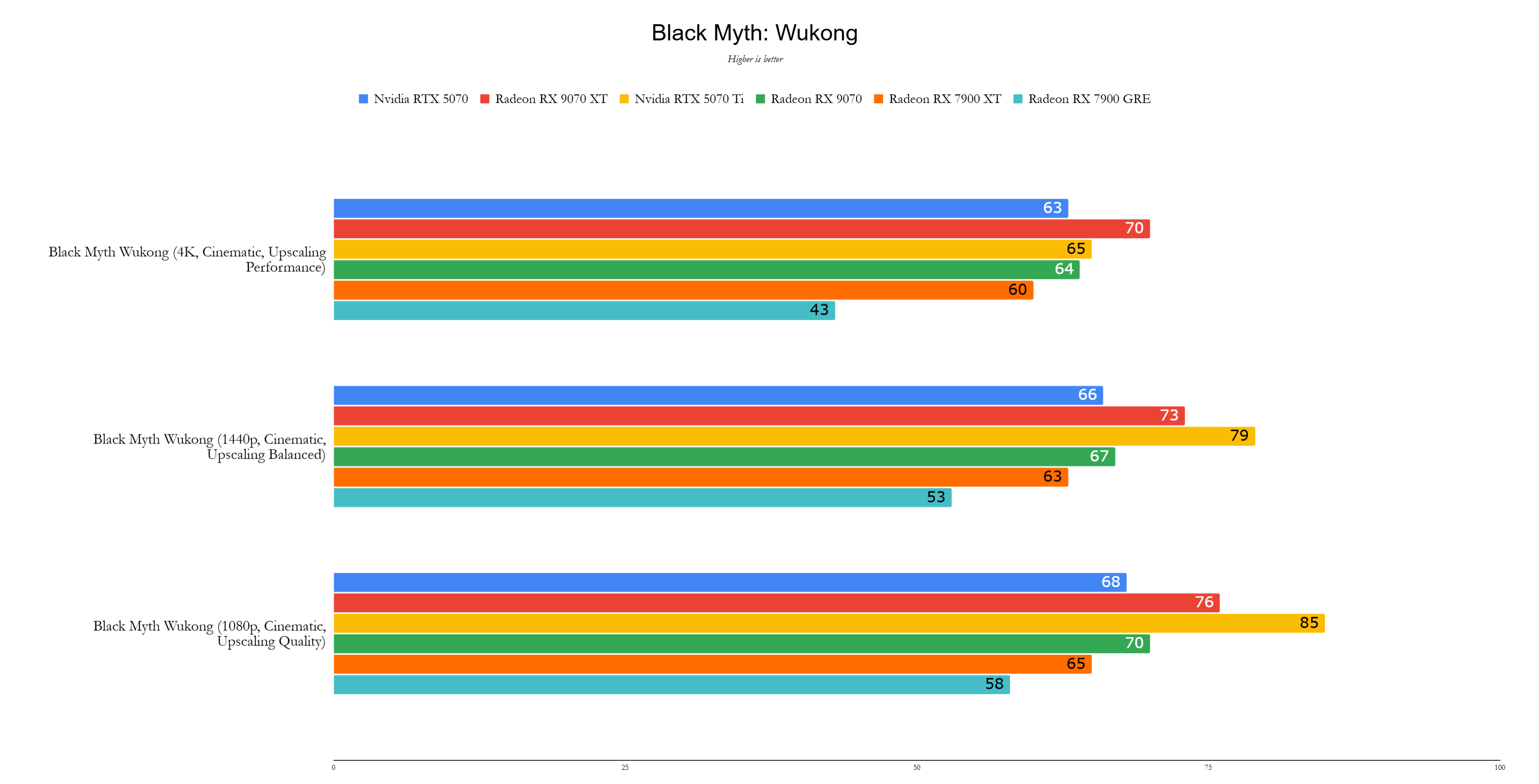
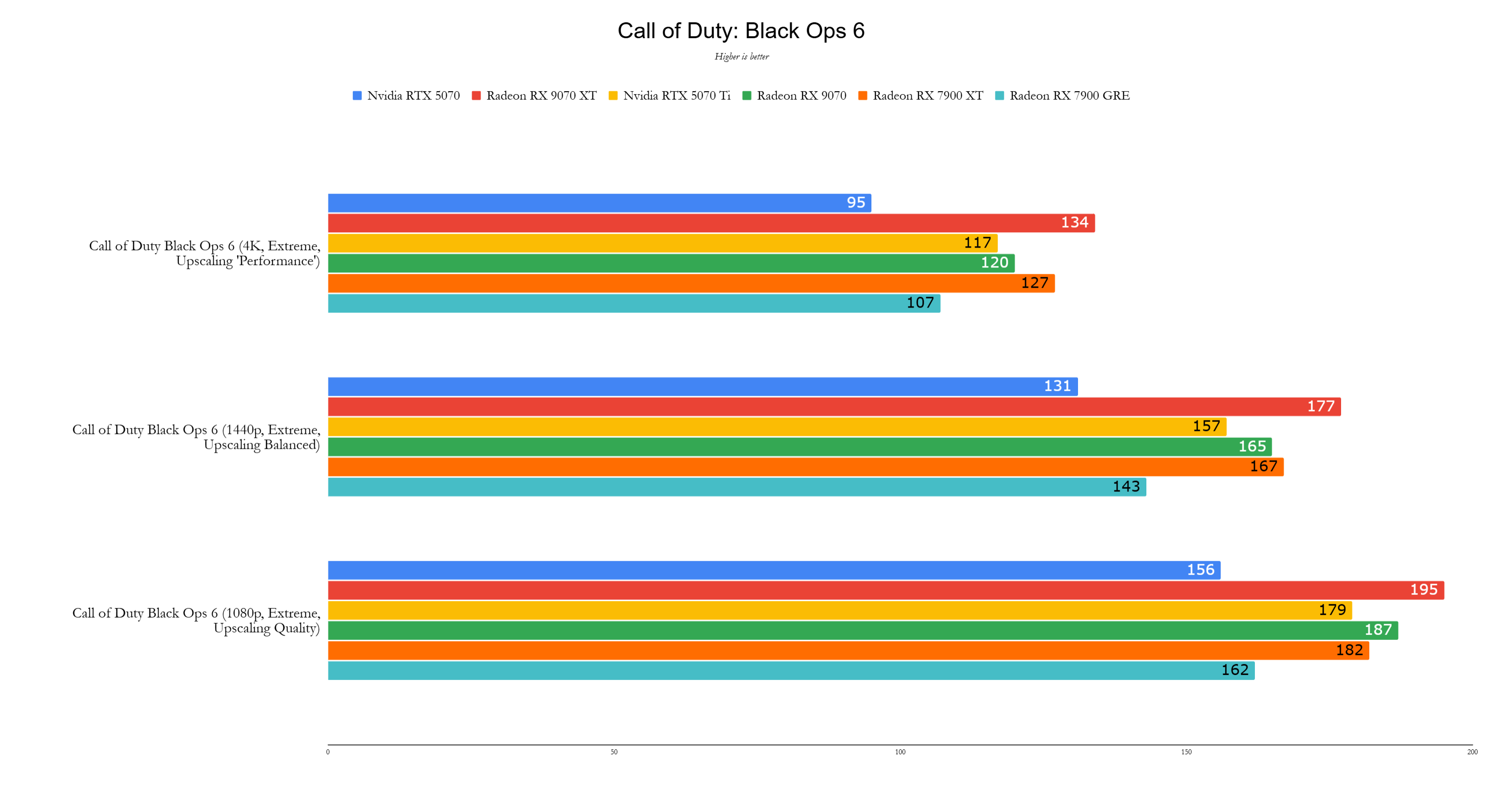
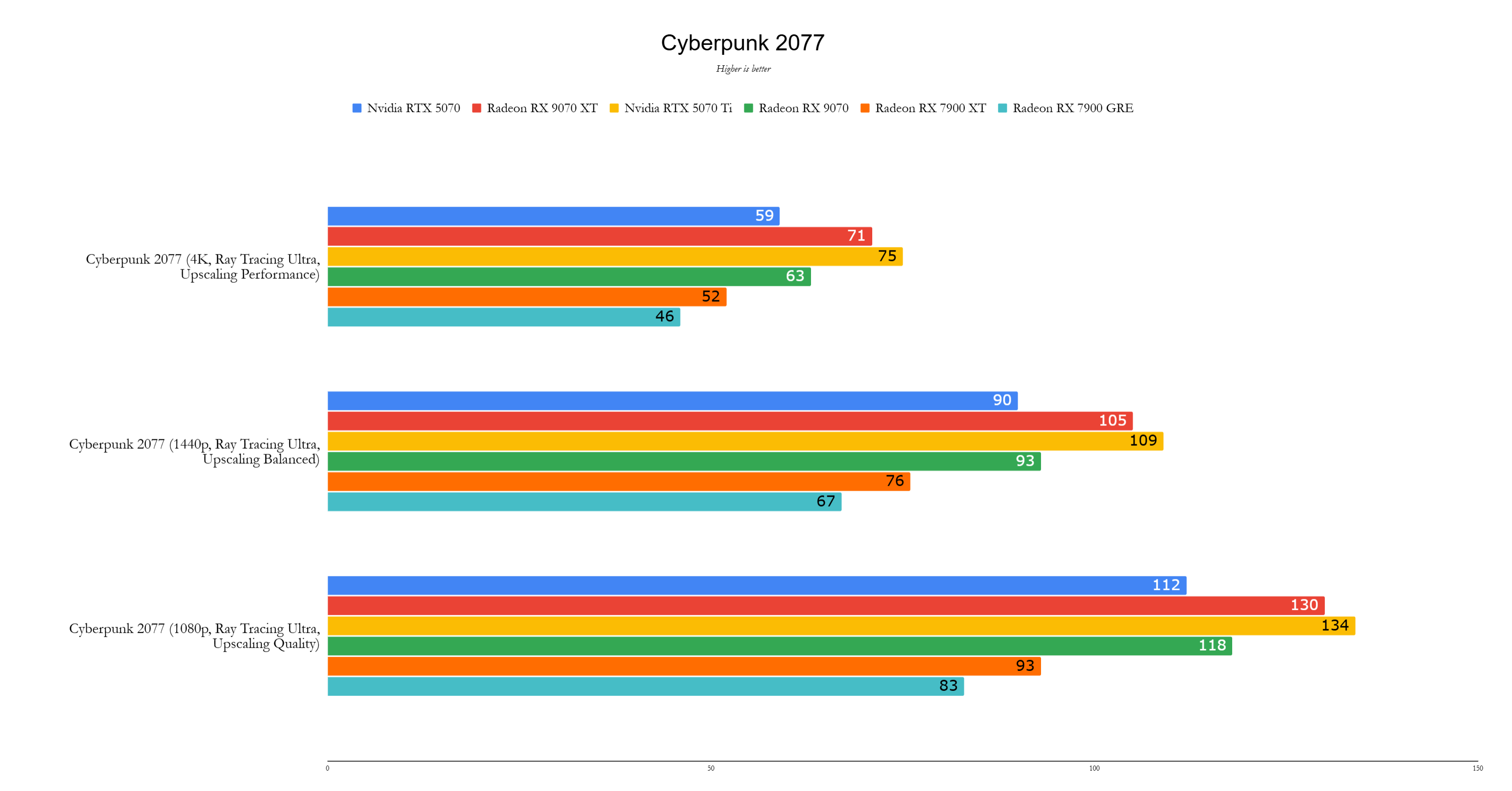
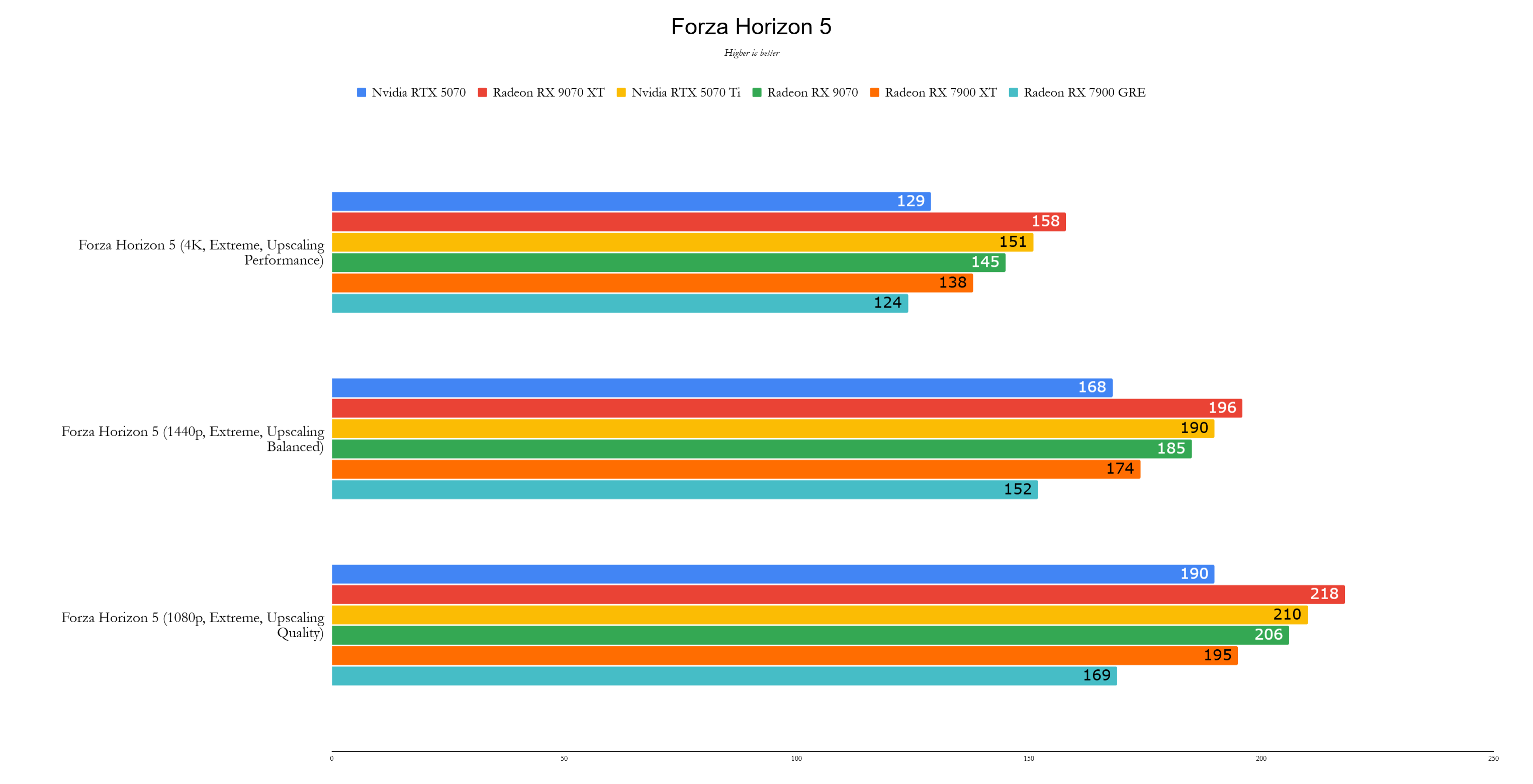
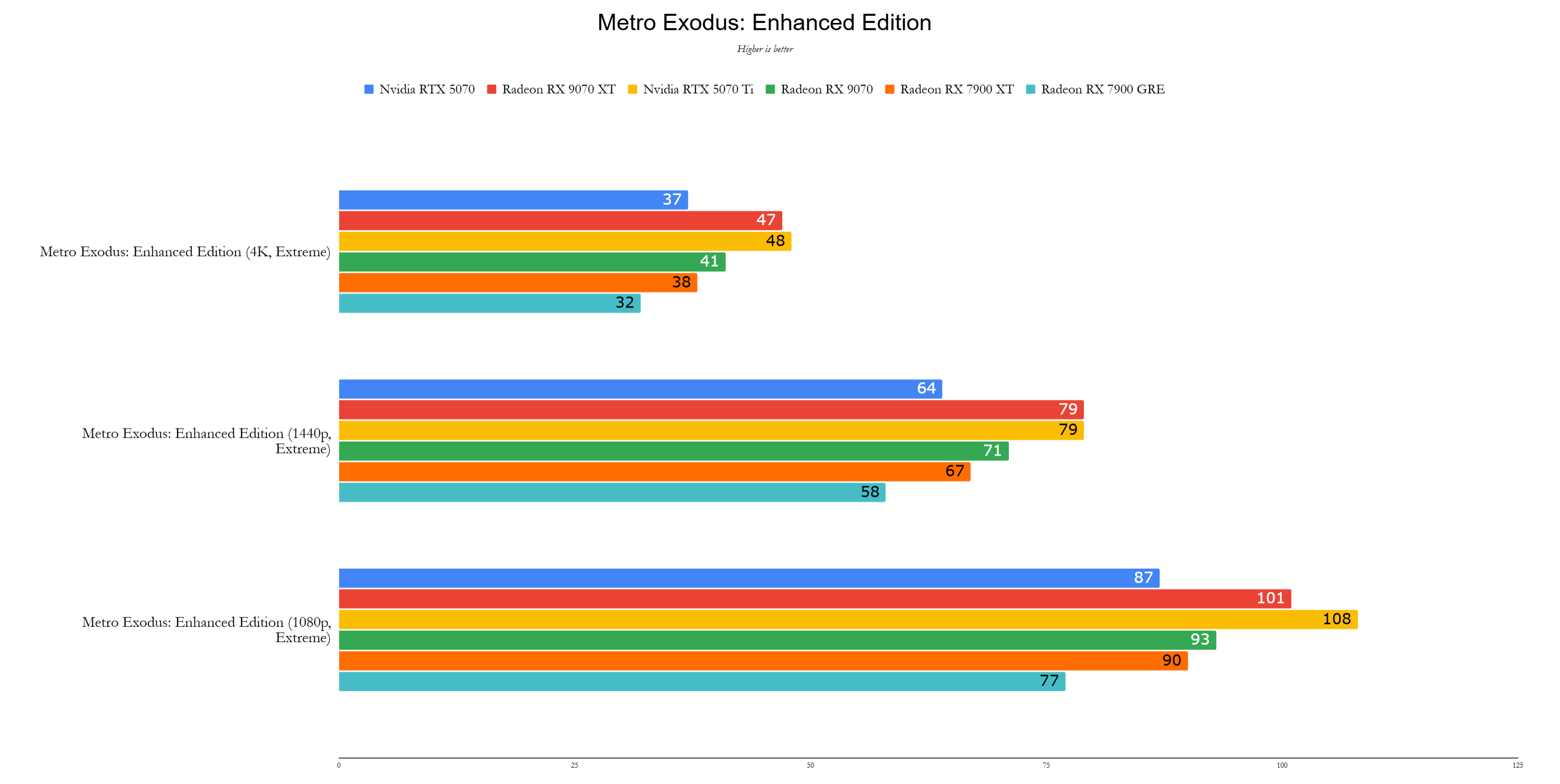
Performance
The Radeon RX 9070 XT delivers impressive performance. At $599, it undercuts the RTX 5070 Ti by 21% while achieving, on average, 2% faster performance. While the RTX 5070 Ti wins in some games, the overall competitive performance is a significant victory for AMD. Across tests, the 9070 XT was 17% faster than the RX 7900 XT and 2% faster than the RTX 5070 Ti. Its 4K performance, even with ray tracing, is particularly noteworthy.
Testing utilized the latest drivers (Nvidia Game Ready Driver 572.60, except for the RTX 5070 which was on review drivers; AMD Adrenalin 24.12.1, except for the RX 9070 XT/9070 which used pre-release drivers).
3DMark benchmarks (Speed Way and Steel Nomad) showed an 18% and 26% performance increase over the 7900 XT, respectively, with the 9070 XT even surpassing the RTX 5070 Ti by 7% in Steel Nomad.
Game benchmarks (*Call of Duty: Black Ops 6*, *Cyberpunk 2077*, *Metro Exodus*, *Red Dead Redemption 2*, *Total War: Warhammer 3*, *Assassin's Creed Mirage*, *Black Myth: Wukong*, *Forza Horizon 5*) demonstrated a mix of wins and losses against the RTX 5070 Ti, consistently outperforming the RX 7900 XT. The 9070 XT's performance in ray tracing-heavy titles like *Black Myth: Wukong* was particularly impressive.
Test System: CPU: AMD Ryzen 7 9800X3D; Motherboard: Asus ROG Crosshair X870E Hero; RAM: 32GB G.Skill Trident Z5 Neo @ 6,000MHz; SSD: 4TB Samsung 990 Pro; CPU Cooler: Asus ROG Ryujin III 360
The Radeon RX 9070 XT's unexpected release feels like a strategic counter to Nvidia's Blackwell GPUs. At $599, it offers a compelling value proposition. While not matching the RTX 5080 or 5090, those cards are overkill for most users and significantly more expensive. The RX 9070 XT represents a return to a more sensible flagship graphics card, reminiscent of the GTX 1080 Ti's impact in 2017.
-
Best Deals on AMD Radeon RX 9070 and 9070 XT Prebuilt Gaming PCs Starting at $1350
Mar 31,2025 -
Best Buy Launches AMD Radeon RX 9070, 9070 XT Gaming PCs
Mar 29,2025 -
AMD Ryzen 9 9950X3D Review
Mar 21,2025 -
The Powerful AMD Zen 5 9950X3D, 9900X3D, and 9800X3D Gaming CPUs Are Now Available
Mar 21,2025 -
The Best Deals Today: PS Portal, PS5 DualSense Controllers, New AMD Ryzen X3D CPUs, New iPad Air
Mar 19,2025 -
AMD Radeon RX 9070 Review
Mar 17,2025 -
Where to Buy the Phenomenal AMD Radeon RX 9070 and 9070 XT Graphics Cards
Mar 15,2025
-
1

Arise Crossover Trello and Discord
Mar 16,2025
-
2

Eighth Era celebrates 100,000 downloads with a limited-time Era Vault event
Mar 17,2025
-
3

Google Play Awards 2024 winners include Squad Busters, Honkai: Star Rail, and more
Jan 09,2025
-
4

Select Quiz lets you test your knowledge across multiple topics
Mar 17,2025
-
5
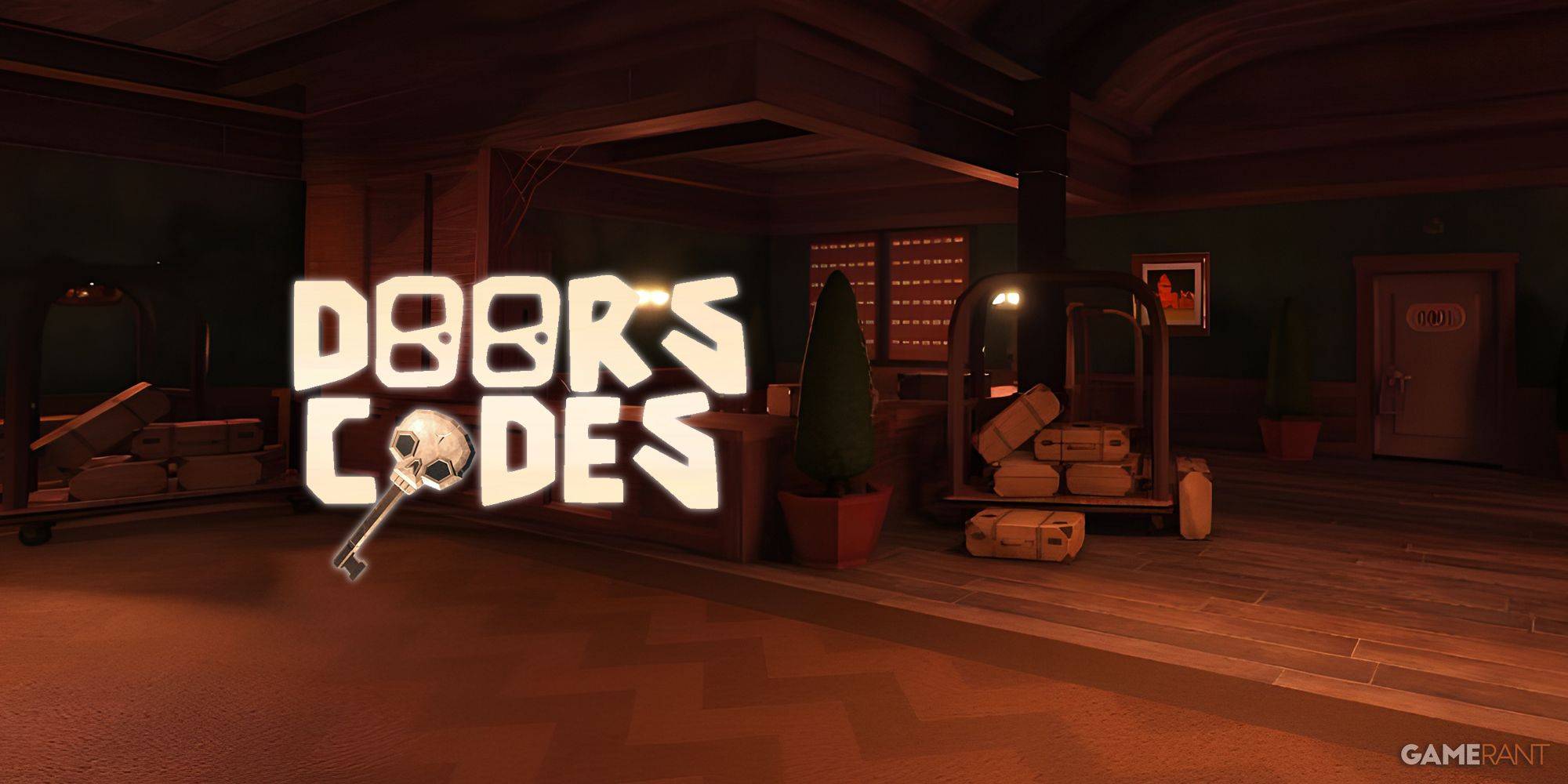
Roblox: DOORS Codes (January 2025)
Jan 07,2025
-
6

Which Starter Should You Choose in Pokemon Legends: Z-A?
Mar 16,2025
-
7

Animal Crossing: Pocket Camp Complete - Where to Farm Snacks
Jan 08,2025
-
8

GTA Online Celebrates St. Patrick’s Day with Free Gifts and Bonuses
Mar 17,2025
-
9

Slither, Compete and Outlast Your Opponents in New Game Snaky Cat
Feb 26,2025
-
10

Sakamoto Puzzle Unravels in Japan
Jan 27,2025
-
Download

Magnet Hero
Action / 45.6 MB
Update: Feb 11,2025
-
Download

Bulma Adventure 2
Casual / 57.55M
Update: Mar 09,2024
-
Download

!Ω Factorial Omega: My Dystopian Robot Girlfriend
Casual / 245.80M
Update: Sep 10,2024
-
4
FrontLine II
-
5
IDV - IMAIOS DICOM Viewer
-
6
ALLBLACK Ch.1
-
7
Red Room – New Version 0.19b
-
8
Escape game Seaside La Jolla
-
9
Color of My Sound
-
10
beat banger













